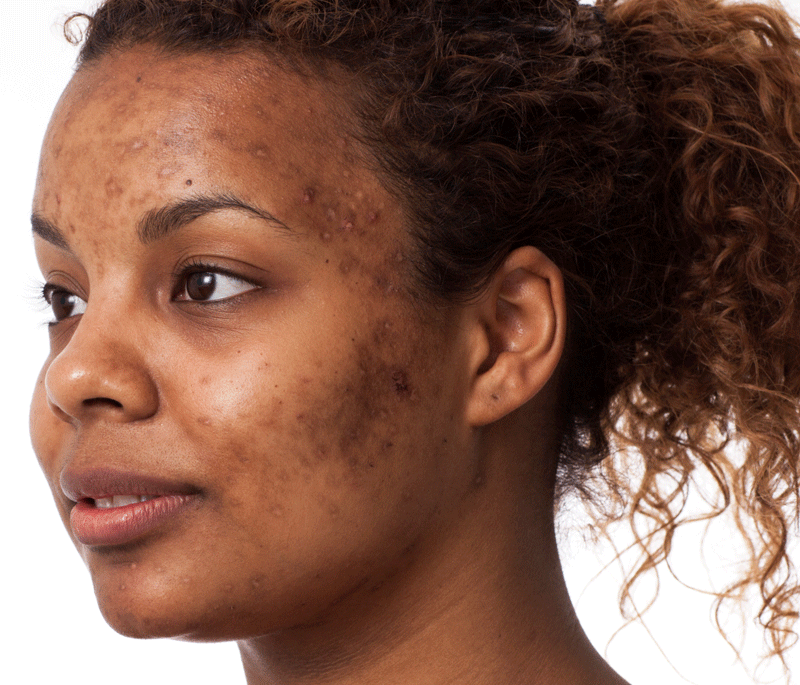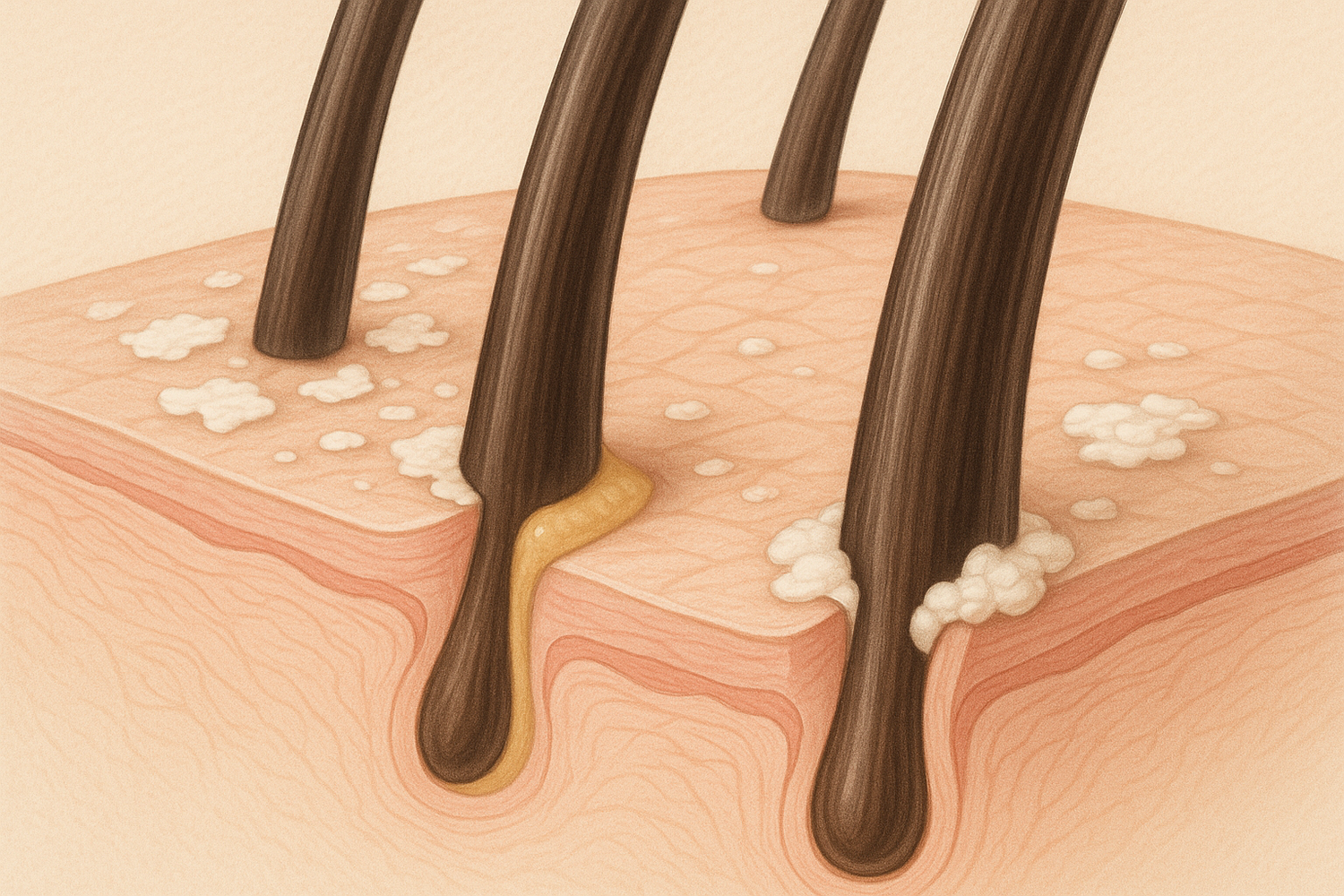Hyperpigmentation refers to the darkening of certain areas of the skin, resulting in patches or spots that are darker in color than the surrounding skin. It can be caused by various factors, including:
1. Sun Exposure: UV radiation from the sun is a common cause of hyperpigmentation. Overexposure to sunlight can lead to the overproduction of melanin, the pigment responsible for skin color, resulting in sunspots, age spots, and freckles.
2. Post-Inflammatory Hyperpigmentation (PIH): Inflammation or injury to the skin, such as acne, burns, or cuts, can trigger the production of excess melanin, leading to dark spots or scars in the affected areas.
3. Hormonal Changes: Hormonal fluctuations, such as those occurring during pregnancy (melasma), menopause, or while taking certain medications (e.g., birth control pills), can lead to the development of melasma or chloasma, which are patches of hyperpigmentation on the face.
4. Genetics: Some people are genetically predisposed to hyperpigmentation. Certain skin types and ethnic backgrounds are more susceptible to specific types of pigmentation issues.
5. Aging: As people age, they may develop age spots or liver spots due to cumulative sun exposure over their lifetime.
6. Skin Conditions: Skin conditions like eczema, psoriasis, and dermatitis can lead to hyperpigmentation in the affected areas.
7. Allergic Reactions: Allergic reactions to skincare products or other allergens can cause skin inflammation and result in hyperpigmentation.
8. Medications: Certain medications, such as antimalarial drugs, tetracycline antibiotics, and some chemotherapy drugs, can increase the skin's sensitivity to UV radiation and lead to hyperpigmentation.
9. Hormone-Related Conditions: Conditions like polycystic ovary syndrome (PCOS) can disrupt hormone balance, potentially contributing to hyperpigmentation.
10. Skin Trauma: Injuries or surgeries can cause the skin to produce excess melanin in response to trauma, resulting in post-surgical or post-traumatic hyperpigmentation.
Hyperpigmentation View Product Recommendations
1. Sun Exposure: UV radiation from the sun is a common cause of hyperpigmentation. Overexposure to sunlight can lead to the overproduction of melanin, the pigment responsible for skin color, resulting in sunspots, age spots, and freckles.
2. Post-Inflammatory Hyperpigmentation (PIH): Inflammation or injury to the skin, such as acne, burns, or cuts, can trigger the production of excess melanin, leading to dark spots or scars in the affected areas.
3. Hormonal Changes: Hormonal fluctuations, such as those occurring during pregnancy (melasma), menopause, or while taking certain medications (e.g., birth control pills), can lead to the development of melasma or chloasma, which are patches of hyperpigmentation on the face.
4. Genetics: Some people are genetically predisposed to hyperpigmentation. Certain skin types and ethnic backgrounds are more susceptible to specific types of pigmentation issues.
5. Aging: As people age, they may develop age spots or liver spots due to cumulative sun exposure over their lifetime.
6. Skin Conditions: Skin conditions like eczema, psoriasis, and dermatitis can lead to hyperpigmentation in the affected areas.
7. Allergic Reactions: Allergic reactions to skincare products or other allergens can cause skin inflammation and result in hyperpigmentation.
8. Medications: Certain medications, such as antimalarial drugs, tetracycline antibiotics, and some chemotherapy drugs, can increase the skin's sensitivity to UV radiation and lead to hyperpigmentation.
9. Hormone-Related Conditions: Conditions like polycystic ovary syndrome (PCOS) can disrupt hormone balance, potentially contributing to hyperpigmentation.
10. Skin Trauma: Injuries or surgeries can cause the skin to produce excess melanin in response to trauma, resulting in post-surgical or post-traumatic hyperpigmentation.
Hyperpigmentation View Product Recommendations





